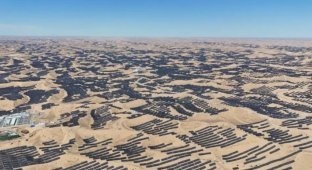The Arctic is turning green due to climate change (7 photos + 1 video)
In winter, the Arctic should be a place of pure whiteness – a vast world of ice and snow stretching for thousands of kilometres. However, scientists who visited Svalbard in February and March have noted “dramatic and alarming changes”. On the Norwegian territory, the researchers encountered abnormally high temperatures, widespread snow melting and flowering vegetation. 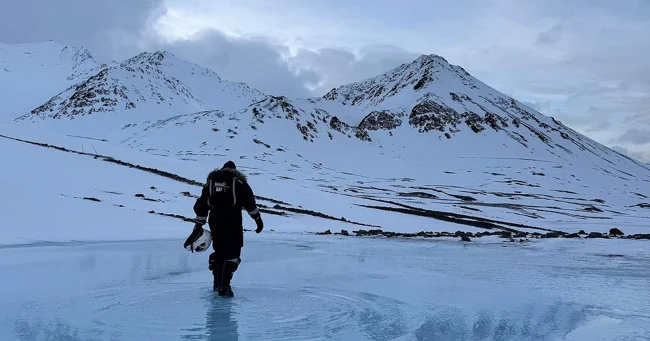
Experts believe that in a few decades, vast areas of the Arctic will resemble the Scottish lowlands in winter.
Dr James Bradley, a researcher at Queen Mary University of London and a member of the expedition, is calling for drastic action to slow global warming.
"Standing in a puddle at the foot of a glacier or in the middle of green tundra is shocking and surreal," he said. "Climate policy needs to recognise that the Arctic is changing faster than we expected." 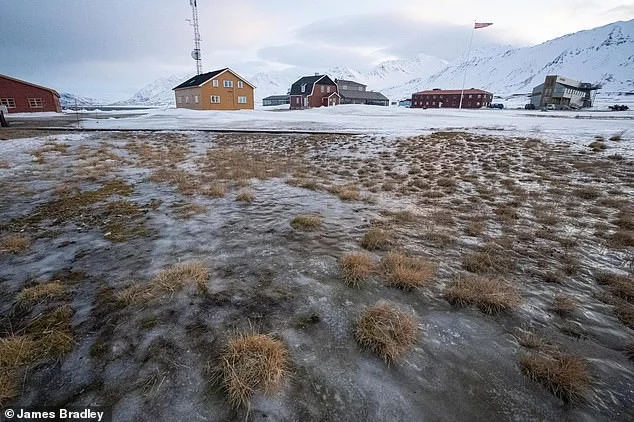
In February this year, Dr Bradley and several colleagues travelled to Svalbard to conduct fieldwork. They recorded "exceptionally" high air temperatures, some of the warmest ever recorded in the Arctic.
For example, in Ny-Ålesund, in northwest Spitsbergen, about 1,200 km from the North Pole, the average air temperature in February 2025 was -3.3°C. This is significantly higher than the regional average for 1961-2001 -15°C.
The team watched as meltwater collected in giant puddles. Snow and ice melted, vegetation came through. And instead of snowfall, it rained. 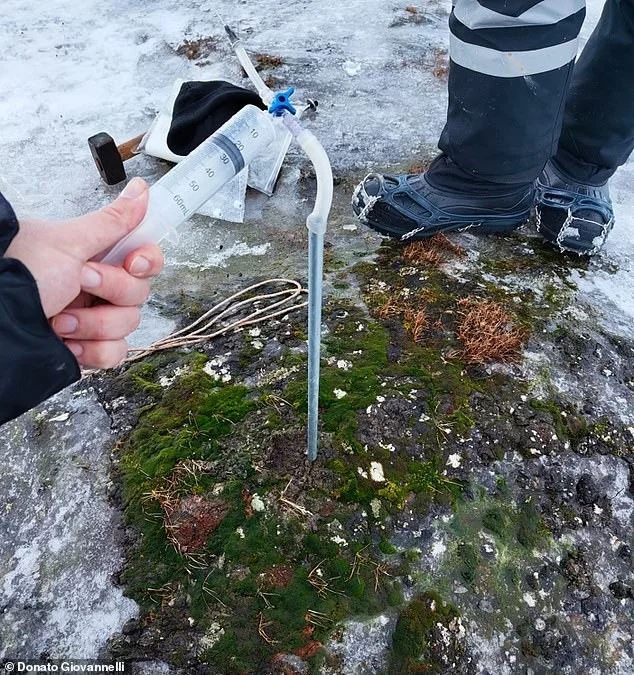
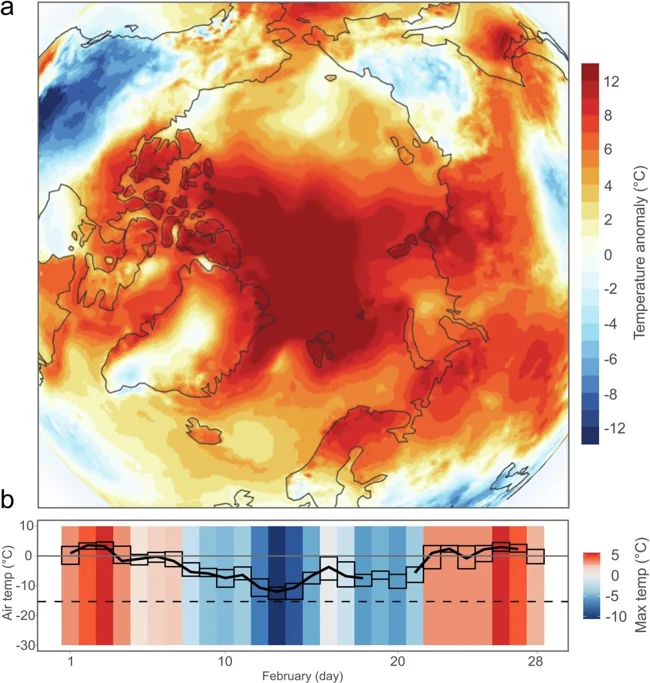
Warming over Svalbard in February 2025: air temperature anomaly in February 2025 over the Arctic region relative to the average value for February in the period 1991-2020
“Bursts of biological activity were observed in the melting tundra,” they note scientists in an article published in the journal Nature Communications.
“At this time of year, the surface layers of the soil freeze. But now they have thawed and become so soft that you can dig them with a spoon.” 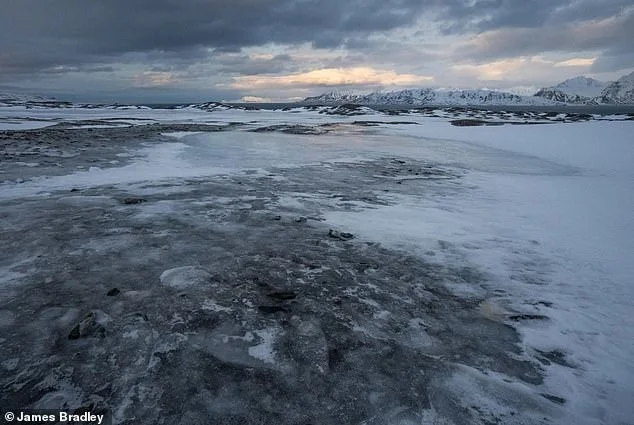
The researchers were used to wrapping themselves in warm clothes, but now they could work in the rain without gloves.
Winter warming threatens settlements and infrastructure on Svalbard, especially due to the risk of avalanches.
Svalbard, the northernmost settlement on the planet, is on the front lines of the climate crisis. It is warming six to seven times faster than the global average. 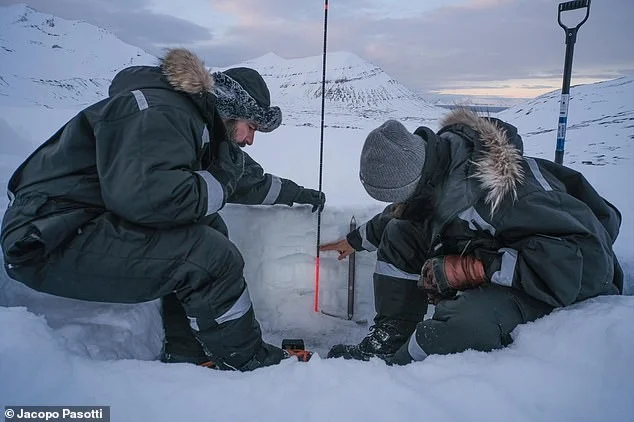
The snowpack on March 1, 2025, was 60 cm thick. It had multiple layers of ice inside, indicating multiple melts in February
The ice reflects sunlight, helping to keep polar regions cool. When it melts, the dark ocean surface absorbs more heat, accelerating warming and shrinking the ice cover.
"Warming has already reached a critical point and is changing the Arctic landscape," Bradley concluded. 

















